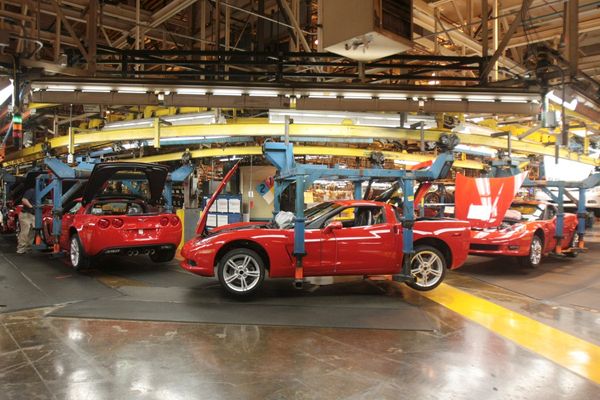/Tesla%20Inc%20logo%20by-%20baileystock%20via%20iStock(1).jpg)
Electric vehicle (EV) maker Tesla (TSLA) has faced a tumultuous year, as its core car business is struggling. This has weighed on its share price, which is down about 10.3% year-to-date, underperforming the S&P 500 Index’s ($SPX) gain of over 17%.
Tesla’s dominance in the EV segment is facing challenges amid fierce competition and price wars. Moreover, shifting consumer preferences toward hybrid models remains a concern. Adding to the challenges, the company’s strategies to revive demand, such as price reductions, have faltered due to persistently high interest rates. Even in China, a key market for Tesla, the company faces heightened competition from local rivals, which has weighed on its vehicle margins.
Despite these hurdles, Tesla stock has staged a notable recovery, surging 19.4% in the past three months to outpace the S&P 500's comparable 5.5% increase. Does this resurgence indicate a turning point for Tesla in 2024?

The uptick in Tesla stock mirrors investors’ growing confidence in recent developments, including the anticipated launch of a budget-friendly EV model and potential growth opportunities from the Robotaxi and advancements in Full Self-Driving (FSD) technology.
Given this backdrop, let’s look at the key factors to understand whether the worst is over for Tesla, and if the weakness in its share price is a buying opportunity.
Competitive Headwinds to Persist in 2024
Once the clear leader in the EV space, Tesla now faces growing challenges from traditional automakers like Ford (F) and General Motors (GM), who have significantly ramped up their EV production. Further, rising competition from companies like BYD (BYDDY) and Nio (NIO) in the Chinese market will likely remain a drag.
Another factor impacting Tesla’s business is the growing demand for hybrid models, which provide the benefits of both electric and gasoline power. This trend could hurt pure-play EV makers, including Tesla.
It’s worth noting that Tesla’s strategy of offering discounts and competitive financing rates may help boost deliveries, but it will likely come at the expense of its profit margins. As a result, revenue per unit will likely remain under pressure, and Tesla's profitability could face headwinds in the near term.
New Growth Catalysts to Take Time
Tesla’s advancements in FSD technology and its upcoming Robotaxi service hold promise for the future, but these developments will take time to materially impact the company’s financials.
Moreover, Tesla’s management said during the Q2 conference call that the company has made notable advancements in artificial intelligence (AI) technology. However, the details around these AI developments remained sparse.
It's Not All Gloom and Doom for Tesla
Tesla’s future growth story is not just about EVs and autonomous driving. One of its lesser-discussed but rapidly expanding business segments, Tesla's Energy Storage division, has been delivering impressive results.
In the second quarter of 2024, the division set a new record with 9.4 GWh of energy storage deployments. Thanks to this milestone, the segment delivered record revenues and gross profits, underscoring this division's critical role in the company’s broader growth strategy.
Looking ahead, Tesla is well-positioned to ramp up its energy storage production. In addition, the robust backlog of orders signals strong revenue growth in the coming quarters.
In addition to its success in energy storage, Tesla remains focused on reducing costs across its operations. The company is lowering the cost of goods sold per vehicle, which will likely cushion its margins. Moreover, Tesla is accelerating the development of AI-enabled products and services, which will likely enhance its operational efficiency.
It’s also worth pointing out that Tesla reported a sequential rebound in vehicle deliveries in Q2, aided by improved consumer sentiment and attractive financing options designed to counter the effects of high interest rates. Looking ahead, an expected reduction in interest rates could give a meaningful boost to its financials and share price.
The Bottom Line on Tesla Stock
The factors discussed above suggest that the worst may not be behind Tesla just yet, as the EV market is becoming increasingly competitive, and Tesla’s margins could continue to remain under pressure. This means that the road ahead could be bumpy, especially in the near term.
This is reflected in analysts’ recommendations on Tesla stock, with most of them recommending a “Hold.” Further, Wall Street analysts’ average price target of $198.29 suggests an expected downside potential of about 11% from current levels.

However, for those willing to ride out the short-term volatility, Tesla remains a compelling growth story in the evolving EV and clean energy markets. Tesla's long-term growth prospects remain robust, driven by its advancements in autonomous driving, higher penetration of EVs, and renewable energy. These catalysts will likely diversify Tesla’s revenue streams, potentially cushioning the company against the risks tied to its vehicle business.
Tesla’s ongoing development of FSD holds promise for creating significant new revenue streams. Beyond that, the company's vision for a Robotaxi service could dramatically shift its business model and bolster long-term growth. Further, the launch of an affordable EV model also strengthens Tesla’s appeal by broadening its customer base. All of that said, Tesla’s recent pullback presents an attractive buying opportunity for long-term investors.
On the date of publication, Amit Singh did not have (either directly or indirectly) positions in any of the securities mentioned in this article. All information and data in this article is solely for informational purposes. For more information please view the Barchart Disclosure Policy here.






